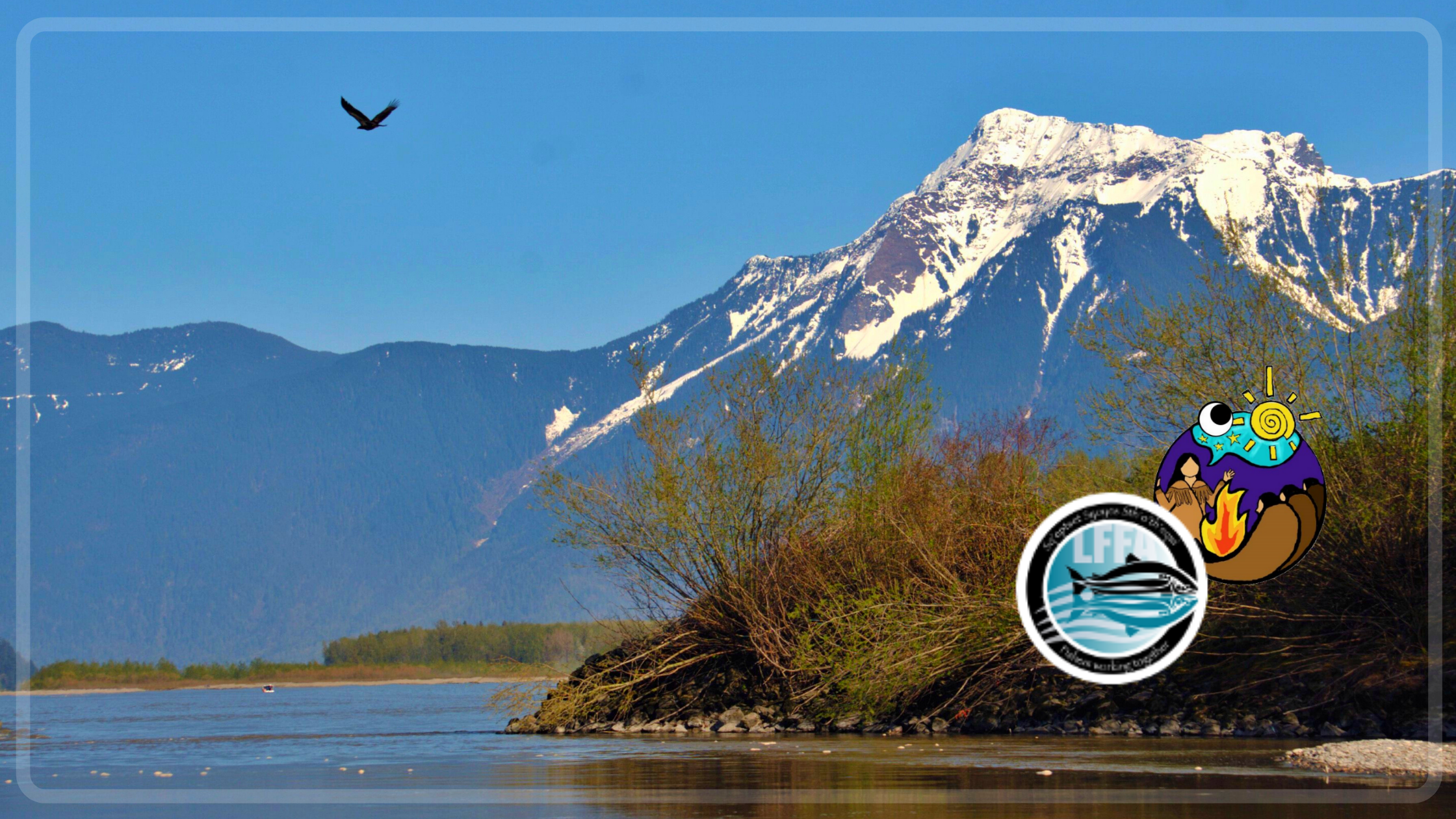
All of us can benefit from respectfully learning about Indigenous stories on the territories we live, work and play on. Whether you are Indigenous or not, this blog is for you.
We, the LFFA-RELAW Team of Leah, Jessica & Rayanna (more on us below) connect to this work as legal allies amplifying the words and work of the peoples who have cared for these territories since time immemorial. We live on the territories of the Sts’ailes (Harrison Hot Springs, BC), and xʷməθkʷəy̓əm (Musqueam), Skwxwú7mesh (Squamish) and səl̓ilwətaʔɬ (Tsleil-Waututh) (Vancouver, BC).
All three of us live in close proximity to the Fraser River. This mighty river connects the Indigenous peoples of the Lower Fraser to one another and to the fish. It’s also known as the Stó:lō / sq̓ʷa∙nƛ̓íləł stál̕əw̓, or the ‘river of rivers’, with at least 24 sub-watersheds housing lakes, rivers, creeks, and streams flowing into it. This makes the Stó:lō / sq̓ʷa∙nƛ̓íləł stál̕əw̓ the largest fresh-water river that flows into the Salish Sea and Pacific Ocean, serving as a key highway for salmon to travel and reach their spawning grounds.
This reflection encapsulates pieces of our experience as the LFFA-RELAW team in learning what Indigenous stories, both sxwōxwiyám / sx̌ʷəx̌ʷəyém (‘origin histories describing the distant past’ or ‘tell stories’) and sqwélqwel / sqʷelqʷəl (‘true / family histories and stories’) can teach us all, about Indigenous laws related to watershed management and fisheries governance in the Lower Fraser.

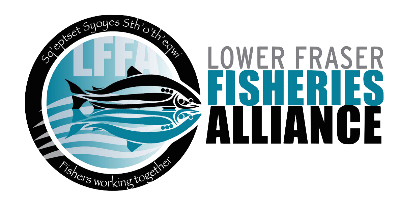 The LFFA-RELAW Project
The LFFA-RELAW Project
The LFFA-RELAW project is grounded in a Learning Partnership Agreement between the Lower Fraser Fisheries Alliance (LFFA) and West Coast Environmental Law’s RELAW program. The LFFA is a voice for First Nation communities, members and leadership of the 30 First Nations from the mouth of the Fraser River to the Canyon on fisheries issues. RELAW is a unique co-learning and legal support program focused on the identification, application and enforcement of Indigenous law by Indigenous nations.
Our learning process on the LFFA-RELAW project began at the end of 2018 when we began to listen to and read hundreds of sxwōxwiyám / sx̌ʷəx̌ʷəyém, as well as met with over 60 knowledge holders and fishers. We had the privilege of hearing their stories: their sqwélqwel / sqʷelqʷəl that express their relationship to their families and ancestors, to their waters, fish, and their wider territory.
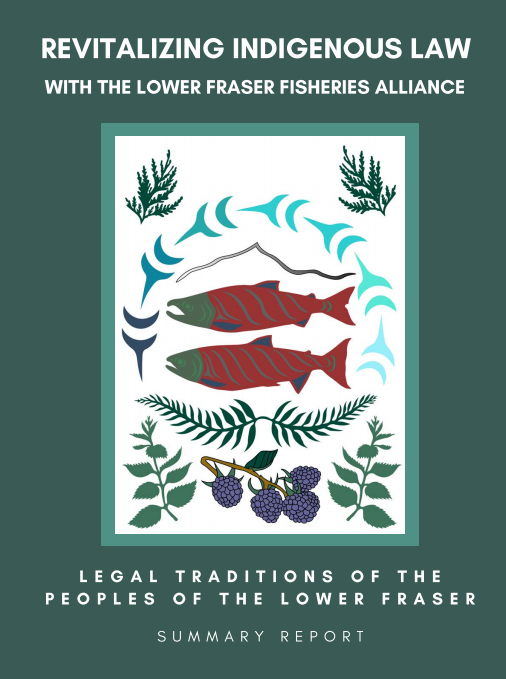 In 2020-21 we began drafting a Legal Synthesis Report, which weaves together and verifies the knowledge holders’ teachings and stories into a summary of legal principles. We recently launched this Report’s Summary: Revitalizing Indigenous Law with the Lower Fraser Fisheries Alliance (volumes to follow).
In 2020-21 we began drafting a Legal Synthesis Report, which weaves together and verifies the knowledge holders’ teachings and stories into a summary of legal principles. We recently launched this Report’s Summary: Revitalizing Indigenous Law with the Lower Fraser Fisheries Alliance (volumes to follow).
We heard, and write, of the massive cumulative effects being experienced by the people, the fish, water and broader territories, including multiple other beings and species. Kwilosintun, Murray Ned, Sema:th Councillor and the Executive Director of the LFFA explained in the opening of the Report we released, saying:
“We find ourselves in a fisheries resource crisis driven by siloed management and decision-making based on socio-economic factors that often do not reconcile with conservation, water or habitat restoration. Political and management decisions based on monetary or commercial needs are regularly in conflict with baseline conditions needed for fish to thrive.”
Recognizing that there is a fisheries resource crisis, a question that we asked ourselves and knowledge holders was: ‘What is this Story teaching us?’
The sqwélqwel / sqʷelqʷəl and a first-hand experience of witnessing the changes from abundance to scarcity of fish answered our question. We came to understand more deeply the spirit and ancientness of these territories we call home, territories they have been in relationship with since time immemorial. We learned how the “inherent jurisdiction and title of the peoples of the Lower Fraser can be traced back to the time of the eternal ancestors who established the ancient connection between the peoples and their territories” (see s 1.2 of the Summary Report for more).

Sema:th Focus Group, July 2019: From Left to Right: Dalton Silver (Chief); Rayanna, Audrey Phare, Sharon Phare, Catherine Ned, Troy Ganzeveld, Deborah Carlson (WCEL lawyer), Jessica Clogg. Front row left to right: Henry Ned, John Kelly Sr., Lester Ned Sr., Leah Ballantyne.
Moving forward, the intention is for the legal principles described in the Legal Synthesis Report to be an educational tool to support interested individuals who want to learn more, while also being utilized by the LFFA to inform dialogues and processes for developing an Indigenous-led Fish Habitat Restoration Plan and Climate Adaptation Strategy (“Strategy”) for the Lower Fraser. The Strategy will be led by LFFA and its member nations, in collaboration with interested allies and stakeholders.
Building Relationship with the Lower Fraser Territories in a deeper way
What we, the LFFA-RELAW team learned, and continue to learn, enables us to respect the lands and waters in a deeper way because we now understand, a little more, the Indigenous histories of these territories we call home. From this journey of building deeper relationship with the Lower Fraser territories, we know that they have been shaped by ancestors and that these ancestors still exist today. We know that the peoples continue to follow their responsibilities to steward and restore their waters and fish.
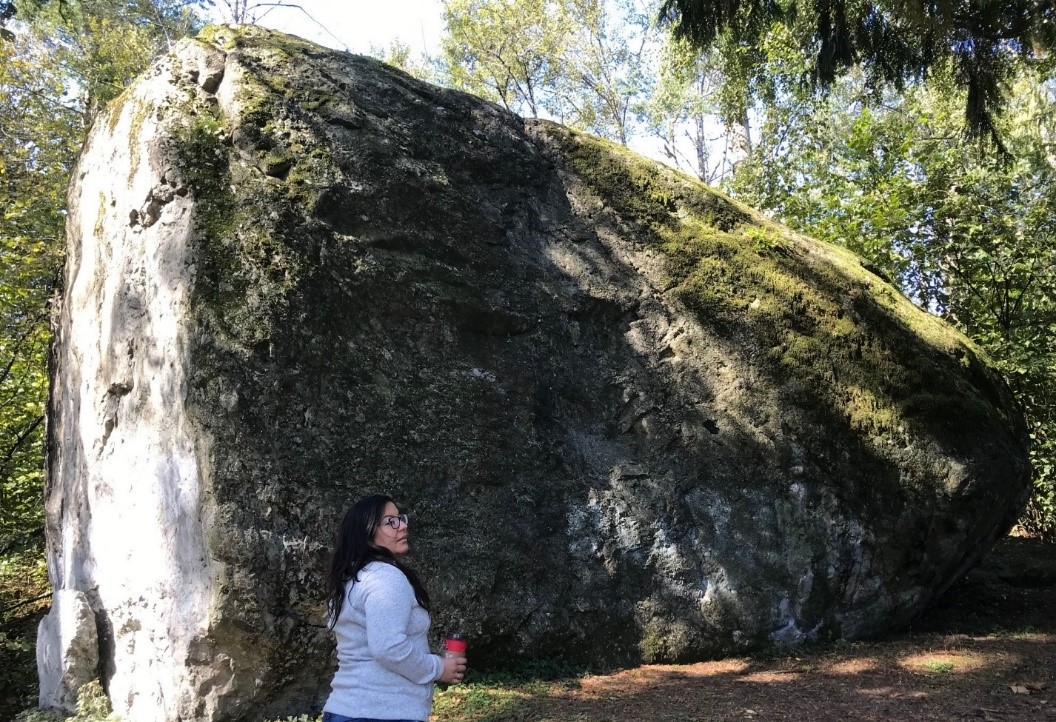
Leah next to a transformed ancestor, known as the Nose, a transformed rock at Lower Sumas Mountain Park. We now know that there is a shxwelí / šxʷəlí ‘life force’ / ‘spirit’ that connects all (see 1.3 of the Summary for more).

The RELAW team kayaked Harrison Lake and River, where we saw Lhílheqey the ‘mother mountain’ known as Mount Cheam, who is an ancestor of the Pilalt tribe who was transformed into a mountain by Xe’xá:ls / x̌eʔx̌é∙l̕s to watch over her people, the fish and the Fraser River for all time.

We visited Yale, another known transformation site, where there is an ancestor named Xéylxelamós who was once an old shwalá:m / šxʷnéʔem (doctor) we now know as ‘Lady Franklin Rock’ who was transformed by Xe’xá:ls / x̌eʔx̌é∙l̕s (transformers who ‘made the world right’).

Yale is where the Fraser Canyon turns into the Fraser Valley, one of the most powerful waterbodies in the area, also a significant communal fishing spot. Here’s Naxaxalhts’i, Sonny McHalsie from Shxw'ōwhámel telling us about this family-owned dry-fishing rack and how we must all respect that family’s fishing spot, and respect the inherent rights of Indigenous fishers to have access to the water. (For more information on Naxaxalhts’i Stó:lō cultural tours, visit: http://www.stolotourism.com/tours)

Naxaxalhts’i also told us of the danger of this place as well and the importance of people knowing the power of the water. We learned about this place in sxwōxwiyám / sx̌ʷəx̌ʷəyém as being the last place where the sockeye salmon were introduced to the Fraser River watershed by transformed ancestors.
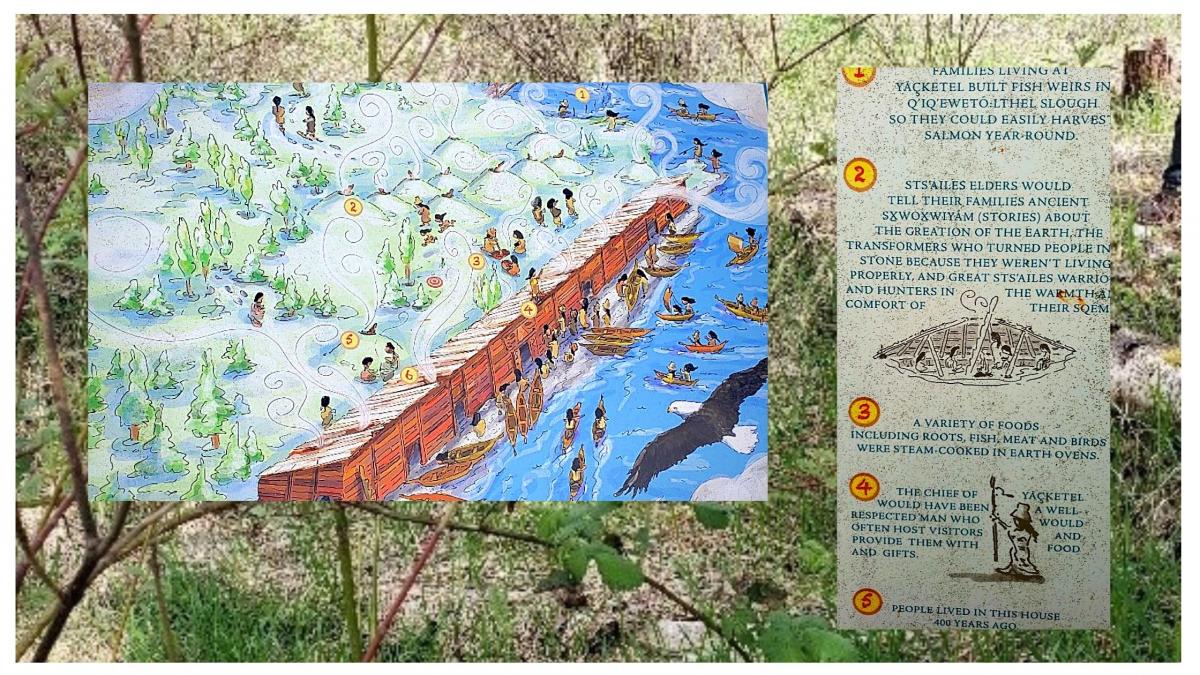
Visiting the Sts’ailes winter village of Ýaçketel. We understand that the peoples’ histories are still remembered by the land and water.

Leah, Jessica & Rayanna (behind camera) spending time with Pitt Lake. We learned from the Q’ets:í (Katzie) knowledge holders that it’s a tidal lake, one of two in the world.
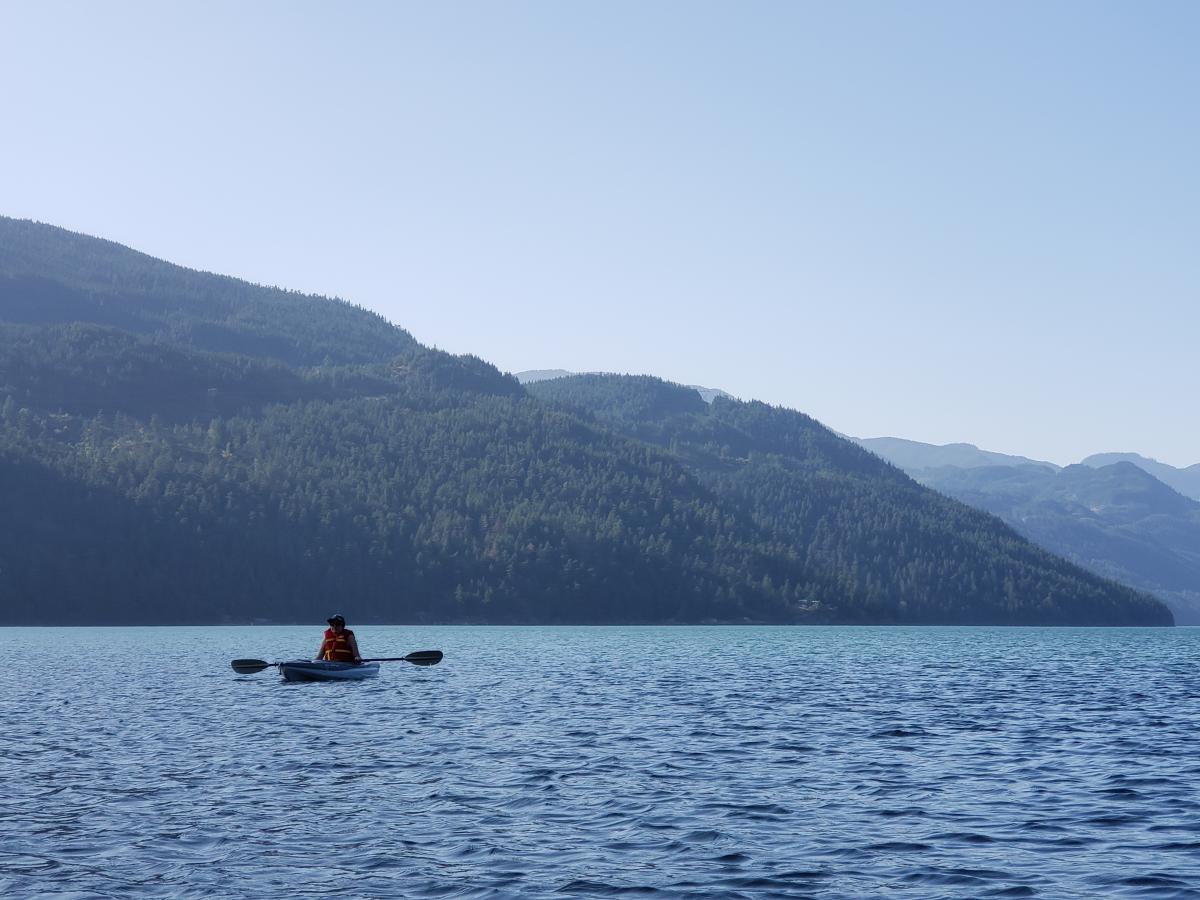
The LFFA-RELAW Team spending time with Harrison Lake kayaking, reflecting on the stories we heard of Sasquatch being known to live in and travel the area.
There are so many more beautiful experiences we had on the land and with the people that we will always cherish. We still vividly remember gathering and eating some really good food made by aunties. Now that we live in a different world, we were able to continue our relationships through Zoom and phone, while writing this legal synthesis report and reflecting heavily.
Keep up with www.lffa.ca/initiatives/relaw for the online release of the rest of the legal synthesis report that weaves together what we learned from the stories and knowledge holders about fisheries governance and watershed management.
 About the LFFA-RELAW Team
About the LFFA-RELAW Team
The LFFA-RELAW Team looks forward to continuing this work, amplifying the voices of the story-tellers of these territories for habitat restoration, conservation and governance transformation efforts.
Rayanna Seymour-Hourie (writer of this blog) is Anishinaabe from Anishinaabeg of Naongashiing, Treaty 3 Territory in Ontario; and Jessica Clogg is a settler who grew up in Mission, British Columbia – both Lawyers at West Coast Environmental Law who live in Musqueam, Squamish and Tsleil-wautuh Territories in Vancouver. Leah Ballantyne, Mikisew Iskwew, is Nehithaw ota from Pukatawagan/Highrock in Treaty 6 Territory, northern Manitoba. She is a lawyer and the LFFA-RELAW Coordinator and lives in Sts’ailes territory at Harrison Hot Springs. (Photo: The LFFA-RELAW team with Naxaxalhts’i)